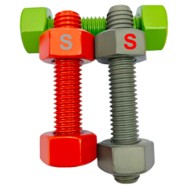
Making sense of clothing measures at times resembles reading a coded message
- Observing your bodily proportions begins correct selection
- Obtain exact bust, waist and hip figures before ordering
- Use the vendor's sizing reference to compare figures
Don't depend solely on label sizes since they can deceive Better to use personal dimensions to consult the guide. Cultivating style depends on exploration and practice.
Unveiling the mystery behind size guides
Measurement mismatches create widespread shopper frustration. Reading size tables can feel like solving a complex brainteaser, given brands apply unique numerical systems. Still, simple knowledge and tools let you overcome sizing puzzles.
- First, learn the different measurement systems brands use. Generally makers provide US, UK, European and regional Asian metrics.
- Following that, check bust, waist, hip and inseam entries carefully. Measure up the chart values against your body specifics.
- Lastly, review the company's fit guidance for special advice. Those guides often include practical notes, alterations and tips.
Zeroing in on your true fit when browsing
The territory of clothes measurements often confuses shoppers. Because of varied charts, medium can equal small at other stores. Discrepancies result from brand-specific scaling systems. Therefore start the process by taking your own precise dimensions. Pick up a measuring band and determine bust, waist and hip figures. Avoid assuming your regular size always guarantees fit. Within one label, styles may alter how a size performs. Determining the best fit is a process of trial and adjustment.

Selecting between off-the-shelf or tailored measurements
For products such as furniture you face a standard or custom choice. Each route comes with advantages and trade-offs. Stock sizing gives ease and often a lighter price tag. If you have an unusual space or special requirement custom may suit better
- Gauge your priorities and budget to guide the decision
- Obtain accurate size figures for room or body before ordering
- Research makers and options thoroughly before purchase
At last the appropriate size choice depends on personal needs.
Getting comfortable with global size equivalences
Moving between global size conventions can present tangled routes. Luckily useful conversion charts and guides exist to assist. Kick off by recognizing standard clothes and footwear size systems. Leverage reference tables to convert international sizes. Remember that figure and proportions affect how garments sit. Don't hesitate to read reviews and size notes before buying.
Decoding fit: sizing made simple
Handling measurement charts can be taxing for buyers. Brands often implement distinct sizing philosophies, however a few pointers here will make the charts approachable.
- Start by accurately measuring yourself with a soft tape
- Then compare those numbers to the sizing chart provided
- Remember physique as shape impacts how clothes drape
In the end, trying items on gives the clearest sense of fit.
A full-scale handbook to men’s and women’s size charts
Purchasing online raises questions about which size to pick. To help, we offer a complete guide to standard men's and women's charts. For trousers, shirts or dresses this resource helps find the fit.
- As a first step, accept that sizes change across makers and locales
- Thereafter, collect waist, hip, bust and torso stats carefully
- When undecided, it's safer to order one size up
Employing these guidelines builds confidence in interpreting size tables. Wishing you great shopping success!

Decoding kids' clothing sizes for parents
Identifying the right fit for children may feel tough. Rapid child growth causes frequent size changes. Consult each maker's chart and not just the age label. Take chest, waist and height measurements to select sizeAccurate bust, waist and hip measuring techniques
Achieving an ideal fit requires knowing your exact body measures. Prepare a soft tape measure and an assistant to record figures. Adopt a neutral upright posture with feet apart and relaxed shoulders
How size ranges from XS to XXL translate
The current world of sizing contains many inconsistencies. Differences among labels mean consistent sizing is uncommon. A methodical look at spans from XS to XXL clarifies matters. Together we'll unpack the real implications of size labels!
Supporting body diversity and inclusivity

Honouring size diversity invites respect for varied forms. It encourages resisting pressures that privilege a single size. Let us develop norms that champion acceptance and self-esteem.
- Prefer actions that cultivate self-acceptance and respect Adopt routines that strengthen body confidence and care Choose body positivity and Size self-acceptance every day Prefer actions that cultivate self-acceptance and respect
- Keep in mind beauty appears in a wide range of forms
- Refuse to accept narratives that limit what bodies should look like
- Opt for daily practices that reinforce body love
